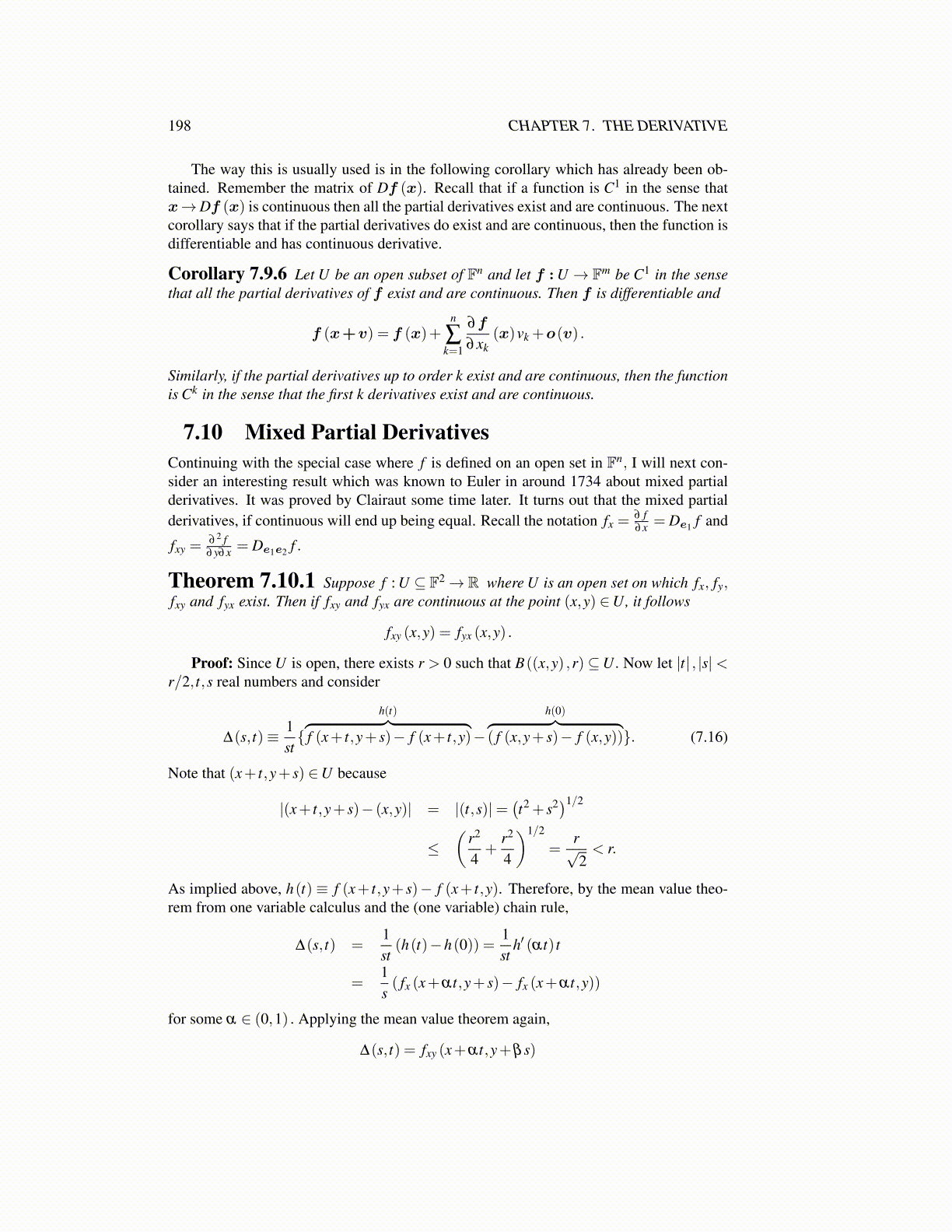
198 CHAPTER 7. THE DERIVATIVE
The way this is usually used is in the following corollary which has already been ob-tained. Remember the matrix of Df (x). Recall that if a function is C1 in the sense thatx→Df (x) is continuous then all the partial derivatives exist and are continuous. The nextcorollary says that if the partial derivatives do exist and are continuous, then the function isdifferentiable and has continuous derivative.
Corollary 7.9.6 Let U be an open subset of Fn and let f :U → Fm be C1 in the sensethat all the partial derivatives of f exist and are continuous. Then f is differentiable and
f (x+v) = f (x)+n
∑k=1
∂f
∂xk(x)vk +o(v) .
Similarly, if the partial derivatives up to order k exist and are continuous, then the functionis Ck in the sense that the first k derivatives exist and are continuous.
7.10 Mixed Partial DerivativesContinuing with the special case where f is defined on an open set in Fn, I will next con-sider an interesting result which was known to Euler in around 1734 about mixed partialderivatives. It was proved by Clairaut some time later. It turns out that the mixed partialderivatives, if continuous will end up being equal. Recall the notation fx =
∂ f∂x = De1 f and
fxy =∂ 2 f∂y∂x = De1e2 f .
Theorem 7.10.1 Suppose f : U ⊆ F2→ R where U is an open set on which fx, fy,fxy and fyx exist. Then if fxy and fyx are continuous at the point (x,y) ∈U, it follows
fxy (x,y) = fyx (x,y) .
Proof: Since U is open, there exists r > 0 such that B((x,y) ,r)⊆U. Now let |t| , |s|<r/2, t,s real numbers and consider
∆(s, t)≡ 1st{
h(t)︷ ︸︸ ︷f (x+ t,y+ s)− f (x+ t,y)−
h(0)︷ ︸︸ ︷( f (x,y+ s)− f (x,y))}. (7.16)
Note that (x+ t,y+ s) ∈U because
|(x+ t,y+ s)− (x,y)| = |(t,s)|=(t2 + s2)1/2
≤(
r2
4+
r2
4
)1/2
=r√2< r.
As implied above, h(t) ≡ f (x+ t,y+ s)− f (x+ t,y). Therefore, by the mean value theo-rem from one variable calculus and the (one variable) chain rule,
∆(s, t) =1st(h(t)−h(0)) =
1st
h′ (αt) t
=1s( fx (x+αt,y+ s)− fx (x+αt,y))
for some α ∈ (0,1) . Applying the mean value theorem again,
∆(s, t) = fxy (x+αt,y+β s)